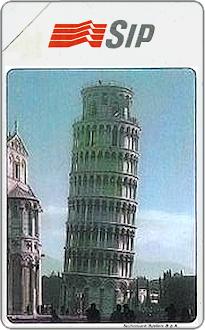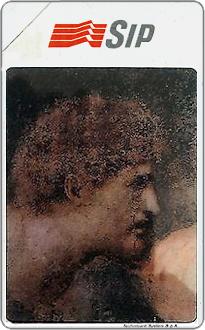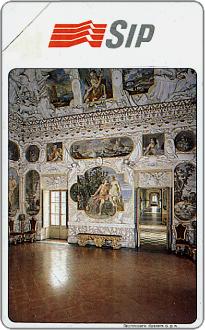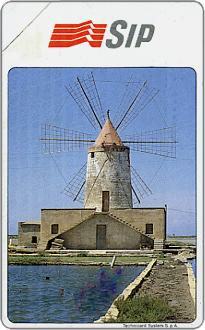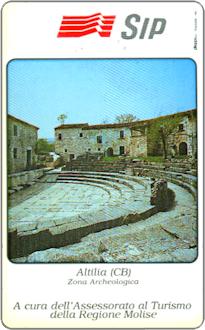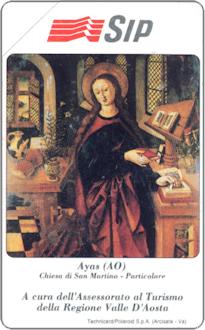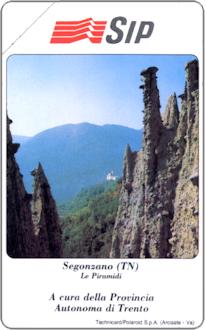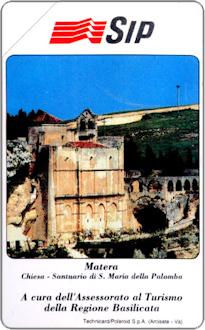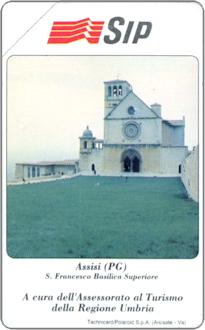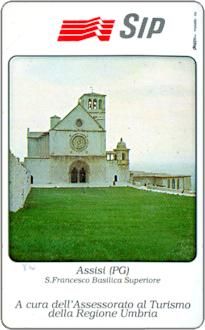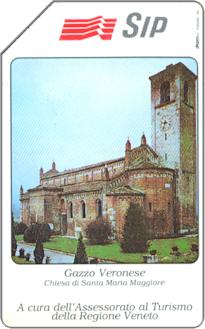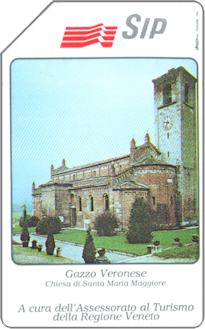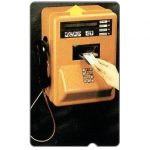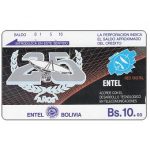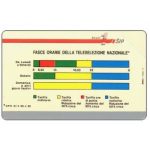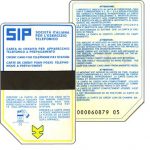In the first months of 1989 five experimental telephone cards of 10.000 lire were issued by SIP, four with a deadline of 31.12.89 and one with a deadline of 30.06.90, with the main purpose of verifying the public’s reactions to a new theme: the beauties of Italy, represented in a kilometric tourist series. The five subjects chosen are the Tower of Pisa, the windmills of Trapani, an interior of an old palace, the detail of a painting by Michelangelo and the Trulli of Alberobello.
The reception is more than positive, for which the initiative is launched. The numerical consistency of the tourist series, limiting only to values of 5000 and 10.000 lire, is 150 different pieces, even if the subjects photographed are only 40; in fact, the issue is entrusted to two different companies, Pikappa and Technicard Polaroid, which realize the series according to the following scheme:
Technicard Polaroid:
- 41 values of 5000 lire
- 40 values of 10.000 lire
Pikappa:
- 24 values of 5000 lire with long barcode
- 24 values of 5000 lire with short barcode
- 21 values of 10.000 lire
The basic scheme of the issue consists in the realization of a pair of views for each of the twenty Italian regions, for which forty values of 10,000 lire are printed by Technicard. The 5000 lire series (again by Technicard) includes one more card, the forty-first, due to the fact that the card with the image of Castel Englar was also reprinted with the A side in a bilingual version for the region of South Tyrol .
PRINTING ERRORS BY PIKAPPA
The Pikappa company instead printed only some of the basic images already issued by Technicard, however, committing some errors in the printing phase that considerably increase the number of cards prepared and distributed to users.
A first mistake is found in the Pescara card (Fontana di Cascella) that was prepared and printed both with the words “Abruzzo” and with the inscription “Abruzzi”. A second mistake can be found in the Perugia card, which presents the variety “large palace” and “small palace” (two different photographs have been used); then there is the Gazzo Veronese card, also in two variants (small church and large church), with two different photographic images. We must include among the photographic errors also the double image of the Cathedral of Palmanova, which in a card is presented in the foreground, occupying the entire space of the figure, while in the other version we see in the background, and then with a smaller image.
In the series of 5000 lire cards of Pikappa there are also other errors that even cause withdrawal from circulation: these are three photographs printed on the reverse side and, therefore, mirrored in comparison to the corresponding images of the Technicard, and are those of Piazzola on Brenta, Assisi and Altilia.
It must be said, however, that all the wrong cards, or with some defects, seen so far do not have significant commercial quotations and indeed do not deviate from the quotations of the “correct” specimens; their circulation is in fact equal to that of the corresponding “non-incorrect” cards.
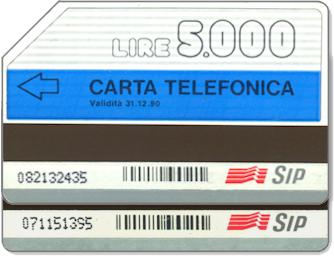
In the series of Pikappa 5000 lire, however, appears a constant variety, present on all values, which actually doubles the number of cards in the face of 5000 lire.
The bar code on the A side, which in the first issue is of the “long” type, in the subsequent ones it is a little more “short”.
It must be said, however, that the cards with long code are rarer than the corresponding ones with short code, since the circulation of the first ones is lower.
This brief overview of the series dedicated to the beauties of Italy ends with the Pikappa of 10.000 lire, which turn out to be 21 different types instead of 24, since the three cards with reversed photographs and with this nominal value are not practically available; probably a very small amount of it was printed before the mistake was noticed and the machines stopped. Then there are other cards of the series landscapes that present more or less obvious occasional varieties, especially in the Pikappa edition: one is the moon in the sky of the “Cascella Fountain” of the Abruzzi card. Then there are the trees with green leaves or without leaves in the card of Palmanova, and other more or less evident variations.



